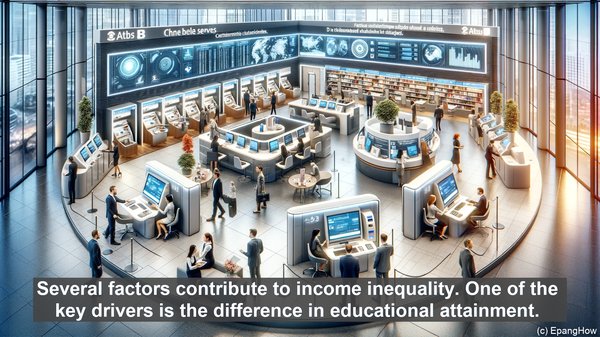Introduction: The Dual Dimensions of Economic Disparity
Hello everyone! Welcome to our article on the distinction between income inequality and wealth inequality. While both terms are often used interchangeably, they represent distinct facets of economic disparity. Today, we’ll explore the differences between the two, their causes, and the implications they have on individuals and society as a whole.
Defining Income Inequality: The Disparity in Earnings
Income inequality refers to the unequal distribution of income among individuals or households within a society. It primarily focuses on the variation in wages, salaries, and other sources of earnings. This disparity can be observed across various income brackets, from the lowest earners to the highest. Income inequality is often measured using metrics such as the Gini coefficient, which quantifies the level of inequality within a given population.
Factors Influencing Income Inequality
Several factors contribute to income inequality. One of the key drivers is the difference in educational attainment. Higher levels of education often lead to better job prospects and higher incomes. Other factors include disparities in access to opportunities, such as job availability and career advancement prospects. Additionally, technological advancements and globalization have also played a role in shaping income inequality, with certain industries and occupations experiencing significant shifts in demand and remuneration.

Wealth Inequality: Beyond Earnings
While income inequality focuses on the disparity in earnings, wealth inequality encompasses a broader spectrum of economic resources. Wealth refers to the total assets an individual or household possesses, including property, investments, and savings. Wealth inequality considers the unequal distribution of these assets. It’s important to note that wealth can be accumulated and inherited over time, often leading to a perpetuation of economic advantages or disadvantages across generations.
Factors Influencing Wealth Inequality
The factors contributing to wealth inequality are multifaceted. In addition to income disparities, factors such as inheritance, intergenerational wealth transfers, and differential access to financial resources and investment opportunities play a significant role. For example, individuals with access to favorable investment options or those who can afford professional financial advice may have a greater likelihood of accumulating wealth over time.
Implications of Inequality: Social and Economic Ramifications
Both income and wealth inequality have far-reaching consequences. From a social perspective, high levels of inequality can lead to social unrest, erode trust in institutions, and create divisions within society. Economically, inequality can hinder overall growth and stability. When a significant portion of the population has limited purchasing power, it can impact consumer demand and, subsequently, economic activity. Furthermore, inequality can also lead to disparities in access to essential services, such as healthcare and education, perpetuating a cycle of disadvantage.

Addressing Inequality: A Complex Challenge
Addressing income and wealth inequality is a complex task that requires a multi-faceted approach. Policies that focus on improving access to quality education, promoting job creation, and ensuring fair wages can help mitigate income disparities. Similarly, measures such as progressive taxation, inheritance tax, and initiatives to enhance financial literacy can contribute to reducing wealth inequality. However, finding the right balance between addressing inequality and fostering economic growth remains a challenge.
